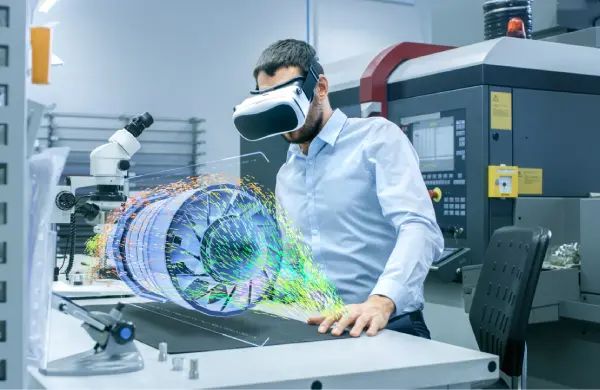Multi- Physics Design Workflow for Electrical Motors
The electrical machines has been rapidly evolved in the last few years.
Welcome to Equilibrium Solutions Pvt. Ltd. (ESPL). We are an established engineering consultancy delivering exceptional engineering services and support since 2006. Based in Pune, India, we proudly support global customers from Japan at far east to Canada at the West, focusing on building strong, lasting partnerships. We provide top-notch virtual engineering services and solutions, ensuring timely delivery and consistently meeting customers' engineering requirements.
Know More
Customer Retention Rate
At ESPL, we passionate about innovations in Battery Technologies like thermal management, safety and durability to enhance performance, energy efficiency, and lifecycle. We support EV manufacturers in developing future solutions and contribute our best in developing an emission free world.
At ESPL, we specialize in Vehicle Thermal Management solutions, designed to optimize performance and efficiency. Our expertise includes simulating and optimizing complex vehicle thermal systems like Battery, Powertrain, EDU, HVAC and Underhood.
At ESPL, based on our expertise we have developed a workflow for EDU development. It streamlines challenges associated with Multiphysics aspects like vehicle dynamics (sizing), electromagnetic systems (motor), thermal/cooling, vibration and durability.
Whether it's optimizing aerodynamics to reduce drag, enhancing safety through comprehensive crash simulations, or meeting strength, NVH, and durability targets, at ESPL, our team is dedicated to delivering expert solutions in Vehicle Body Engineering with passion and competence.
At ESPL, we enhance automotive interiors with a focus on safety and comfort. From advanced airbag deployment and HVAC solutions to ensuring passenger comfort, the strength of seat belt anchorage, we cover it all. Our expertise in designing plastic trim parts combines functionality and feasibility, delivering reliable support to our customers.

Experience since 2006 and counting on while supporting Global customers developing competence

Seamless Integration of Multi Physics, Technology and Systems know how under one roof

Ensuring on-time delivery with first-go acceptance for every task

Good bench strength, in house skill development programs

Various support models as per the customer’s requirements

Research Team focusing on scripting, customization, AI-ML

The fuel consumption of a commercial truck is very much influenced by its aerodynamic performance. The greater the drag resistance, the greater is the fuel consumption. Therefore, it is very important to design the truck to minimize drag.
Let’s explore how we can assist your team!